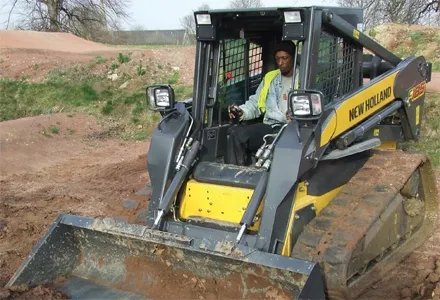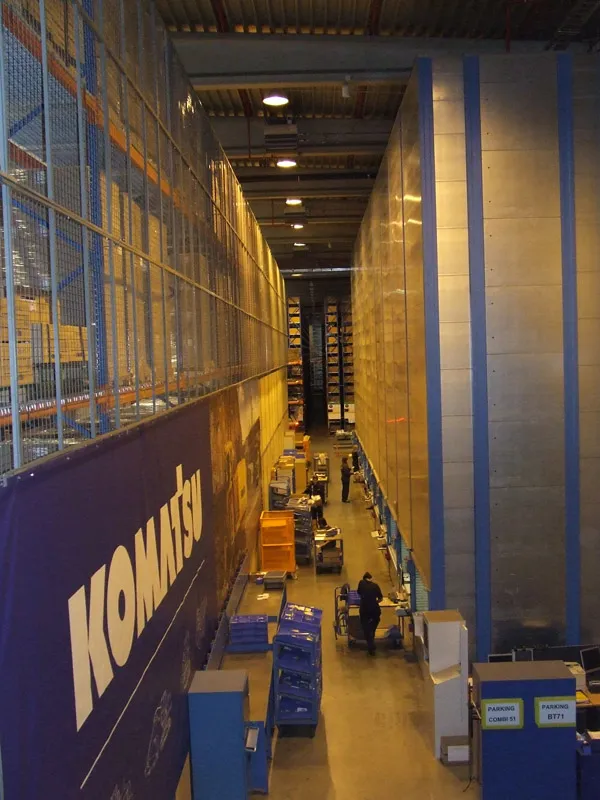A slow but steady recovery in machine sales worldwide is likely in the next few years, with India being one of the key growth markets for the future. However, this comes after the construction equipment sector has seen significant downturns as well as other major changes worldwide in the last few years, according to David Phillips, managing director of Off Highway Research. He said, “The industry structure has really changed.”
Global sales of construction machines were worth around US$93 billion in 2014
October 28, 2016
Read time: 5 mins
A slow but steady recovery in machine sales worldwide is likely in the next few years, with India being one of the key growth markets for the future. However, this comes after the construction equipment sector has seen significant downturns as well as other major changes worldwide in the last few years, according to David Phillips, managing director of Off Highway Research. He said, “The industry structure has really changed.”
Global sales of construction machines were worth around US$93 billion in 2014 and dropped to $78 billion according to Phillips, who estimates that total sales for 2016 will be around $72 billion. These figures contrast strongly with the results for 2011 when global sales of construction machines hit an astounding $102 billion. This last figure was unsustainable and was driven by the huge infrastructure development programme in China. However Phillips explained, “In 2011 the market crashed because the Chinese Government put a brake on the development.” He also said that the rapid growth in demand for machines in China had a huge impact on the global market. In 2002 machine sales in China accounted for just 10% of the global market, but grew to 50% in 2010, then falling back down again as the Chinese Government put the brakes on the economy.
Since that time construction machine sales have remained low in some markets. Phillips said, “North America has come back nicely but Europe is very weak.” However he added, “India is very good.”
He continued, “I think in 2016 we will see the market bottoming out,” and he added that a slow global recovery seems likely after although he cautioned, “I don’t think China will get back to where it was.”
Phillips also said, “Europe is very difficult. The market peaked in 2007 at over 200,000 units, fueled by easy financing.” He explained that this figure was unsustainable, which is why in 2009 machine sales in Europe where less than a third of what they had been two years earlier.
Phillips said that he expects the construction machine market in the US to grow again to around 190,000-200,000 units/year in the next few years. He explained that India will be the major growth market however and said, “India is the real body builder of our industry. In the last six months we’ve been seeing quite a lot coming through.” Phillips said that the current Indian Government has been making major steps both in tackling corruption and untangling bureaucracy, which is helping with the pend up demand for infrastructure development.
Meanwhile market trends are also changing, with the excavator being of growing importance for overall machine sales. Phillips believes that in 2015 around $28 billion of the $78 billion worth of construction machines sold worldwide were excavators. Phillips added that he expects excavators to account for around 30% of total machine sales globally in the near future.
The types of machine sales in certain markets are also changing. India for example has been a major market for backhoe loaders. But Phillips said that while sales of backhoe loaders now remain stable, they are losing market share against growing sales of 14tonne, 18tonne and 20tonne class excavators as these machines are better suited to use on infrastructure projects.
Similarly, he said that in China where the wheeled loader has been the major seller in the past, excavator sales are also growing. “I think that in the longer term crawler excavators will reach 30% of the Chinese market,” he said.
Chinese manufacturers are also having to cope with over-capacity. Having built some 220,000 wheeled loaders in 2011, Phillips said he believes the Chinese market will account for around 50,000 wheeled loaders for the next few years. Similarly he said that in 2011 Chinese firms built around 160,000 excavators, but the market will account for around 35,000 units for the next few years. The Chinese firms developed the capacity to build over 250,000 wheeled loaders/year, in excess of the total world demand for these machines of some 114,450 units. And for excavators Chinese firms developed the capacity to make some 430,000 units/year, compared with global sales of 354,062 units. Phillips said, “They’ve taken steps to reduce production.” However he added that there is still excess capacity, particularly for wheeled loaders, while manufacturers also have to contend with a large pool of secondhand machines that have clocked low hours that make attractive deals for customers looking to replace old units. He does not see mergers and acquisitions being a major factor and he is also certain that the 10 key Chinese manufacturers have a strong future.
Phillips added that Chinese manufacturers are also learning fast about how to boost the residual values of their products. Machine quality of the products from the leading firms is now vastly improved while these companies are also gearing up to provide much better product support for customers. Chinese firms have achieved good penetration into developing markets according to Phillips, but have yet to develop the global brand recognition that will allow them to compete in developed markets. He added that this is coming however.
Global sales of construction machines were worth around US$93 billion in 2014 and dropped to $78 billion according to Phillips, who estimates that total sales for 2016 will be around $72 billion. These figures contrast strongly with the results for 2011 when global sales of construction machines hit an astounding $102 billion. This last figure was unsustainable and was driven by the huge infrastructure development programme in China. However Phillips explained, “In 2011 the market crashed because the Chinese Government put a brake on the development.” He also said that the rapid growth in demand for machines in China had a huge impact on the global market. In 2002 machine sales in China accounted for just 10% of the global market, but grew to 50% in 2010, then falling back down again as the Chinese Government put the brakes on the economy.
Since that time construction machine sales have remained low in some markets. Phillips said, “North America has come back nicely but Europe is very weak.” However he added, “India is very good.”
He continued, “I think in 2016 we will see the market bottoming out,” and he added that a slow global recovery seems likely after although he cautioned, “I don’t think China will get back to where it was.”
Phillips also said, “Europe is very difficult. The market peaked in 2007 at over 200,000 units, fueled by easy financing.” He explained that this figure was unsustainable, which is why in 2009 machine sales in Europe where less than a third of what they had been two years earlier.
Phillips said that he expects the construction machine market in the US to grow again to around 190,000-200,000 units/year in the next few years. He explained that India will be the major growth market however and said, “India is the real body builder of our industry. In the last six months we’ve been seeing quite a lot coming through.” Phillips said that the current Indian Government has been making major steps both in tackling corruption and untangling bureaucracy, which is helping with the pend up demand for infrastructure development.
Meanwhile market trends are also changing, with the excavator being of growing importance for overall machine sales. Phillips believes that in 2015 around $28 billion of the $78 billion worth of construction machines sold worldwide were excavators. Phillips added that he expects excavators to account for around 30% of total machine sales globally in the near future.
The types of machine sales in certain markets are also changing. India for example has been a major market for backhoe loaders. But Phillips said that while sales of backhoe loaders now remain stable, they are losing market share against growing sales of 14tonne, 18tonne and 20tonne class excavators as these machines are better suited to use on infrastructure projects.
Similarly, he said that in China where the wheeled loader has been the major seller in the past, excavator sales are also growing. “I think that in the longer term crawler excavators will reach 30% of the Chinese market,” he said.
Chinese manufacturers are also having to cope with over-capacity. Having built some 220,000 wheeled loaders in 2011, Phillips said he believes the Chinese market will account for around 50,000 wheeled loaders for the next few years. Similarly he said that in 2011 Chinese firms built around 160,000 excavators, but the market will account for around 35,000 units for the next few years. The Chinese firms developed the capacity to build over 250,000 wheeled loaders/year, in excess of the total world demand for these machines of some 114,450 units. And for excavators Chinese firms developed the capacity to make some 430,000 units/year, compared with global sales of 354,062 units. Phillips said, “They’ve taken steps to reduce production.” However he added that there is still excess capacity, particularly for wheeled loaders, while manufacturers also have to contend with a large pool of secondhand machines that have clocked low hours that make attractive deals for customers looking to replace old units. He does not see mergers and acquisitions being a major factor and he is also certain that the 10 key Chinese manufacturers have a strong future.
Phillips added that Chinese manufacturers are also learning fast about how to boost the residual values of their products. Machine quality of the products from the leading firms is now vastly improved while these companies are also gearing up to provide much better product support for customers. Chinese firms have achieved good penetration into developing markets according to Phillips, but have yet to develop the global brand recognition that will allow them to compete in developed markets. He added that this is coming however.








